|
|
|
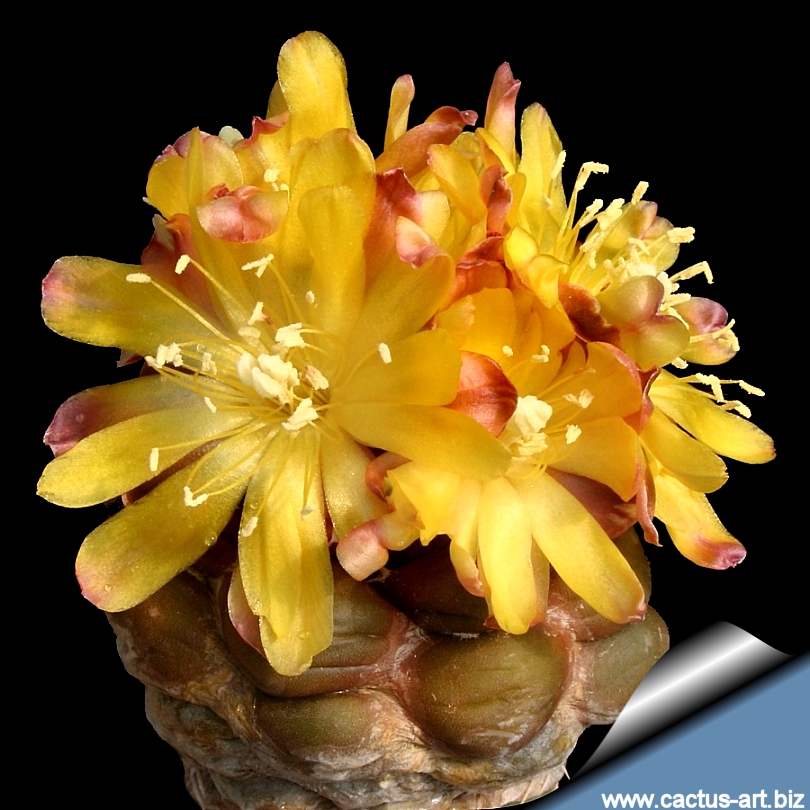
Cintia knizei is a very rare small alpine cactus native to the high
Andes of Bolivia.
|
|
Description:
It is a solitary
dwarf, flat to globose cactus (in the
wild), that become cylindrical when it is grafted.
Stem:
Globose
up to 5 cm in diameter; covered with large rounded
podaria. The colour can vary from olive-green to purple to
brown, depending on the time in the growing season and the amount of
sun and water,
woolly apex.
The
base becomes
corky with
age.
Areoles :
The areoles are sunken between the podaria, and are woolly.
Spines:
5-6 short spines only occur on juvenile areoles; adult plants and
pericarpel are spineless.
Roots:
Deep, tuberous,
carrot-like, up to 10 cm long.
Flower:
Diurnal, yellow 3-4 cm in diameter on the stem tip,
they resemble
those of a Copiapoa.
Fruit:
Elonged, dry with a thin pericarp, that remain for a long time
incorporated within the stem.
Seeds: Black 1,2 mm long 0,7 mm large, the surface is convex
and smooth.
Phenology:
Blossoming: in spring.
|
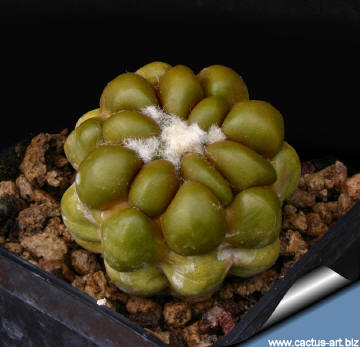
|
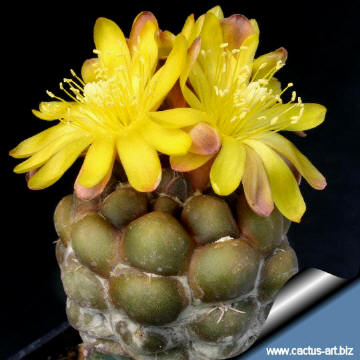 |
|
. |
|
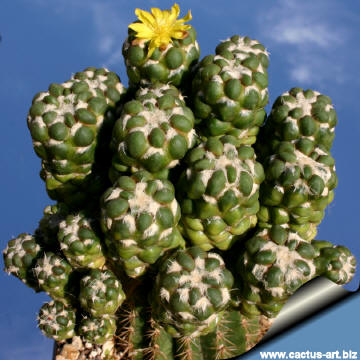 |
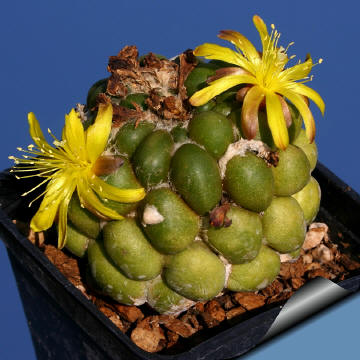 |
|
Cultivation:
These plants come from
mountainous areas, so like bright light, cool and
dry conditions in the
winter; this is important for the
flowers as well as for their
health. Without this
cool winter period (0-10° C) they normally won't get many
buds. They have
a thick
taproot and are of difficult cultivation and
rot prone because of a great
sensitivity to the
excess of watering, not easy to get to any large size on their
own roots really a challenge to grow into a large
clump. They are commonly
grafted to avoid root problems and to make easier to grow.
Sun Exposure: Suited for
sunny-brightly exposure; can tolerate
light shade.
Cultural Practices: Suited for
airy exposures. Needs deep pot and good
drainage to accommodate its
tap root.
It is very cold resistant as low as to -10° C or less for short
periods of time. It is a fine plant for a rock garden or container,
contrasts well with agaves, yuccas, and low-growing flowering plants.
Pests &
diseases: Cintia is especially
prone to root rot, therefore,
underpot in a smaller container filled with very
porous compost.
On a graft the plants are easier to grow, but the body splits if
over-watered (especially in spring).
Propagation: Seeds, also can be grown from cutting or graft.
Seeds can be sown in the spring or summer. The seedlings should not be
disturbed until they are well rooted, after which they can be planted
separately in small pots.
|
|
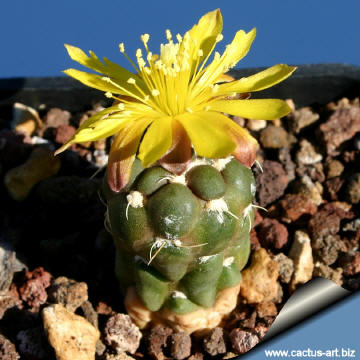
A young specimen ( Height less than 2 cm) |
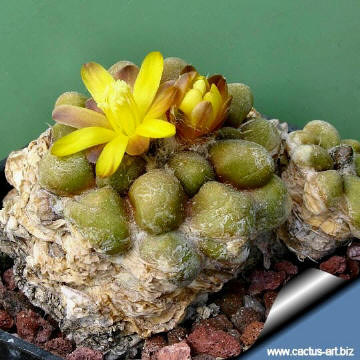
Basal tubercles
become
corky
with
age. |
|
. |
|
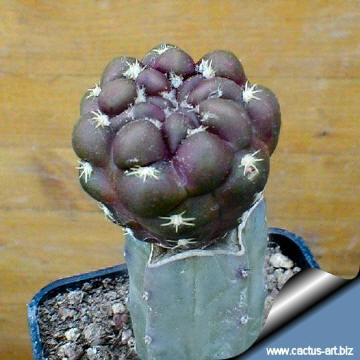
5-6 short spines only occur on juvenile areoles. |
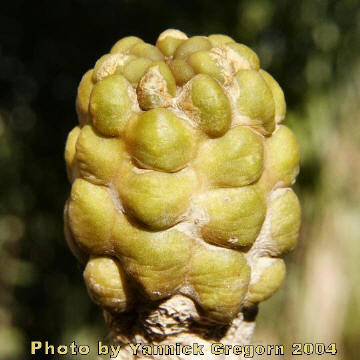
Photo by Yannick Gregorn (Slovenia) |
|
Advertising
|
|
|
|
|
|
Family:
Cactaceae
(Cactus Family)
Scientific Name:
Cintia knizei
Řiha 1996
Published
in:
Jan Říha, Cintia Kníže et Říha - A new cactus from Central Bolivia,
Kaktusy
(Brno), 31(2):
(35)38 (1995) (as Cintia knizei).
Synonyms:
-
Copiapoa knizei (Riha) Halda 1998
-
Rebutia cintia (Riha) Hjertson 2003
Published
in:
Cactaceae Systematics Initiatives, 15: 10 (april 2003).
-
Cintia lecoriensis
n.n.
-
Cintia napina
n.n.
-
Cintia subterranea
n.n.
Distribution:
High Bolivian Andes at 2800-4000 of
elevation.
The first plants where found at Cinti near Otavi, Potosi
department
in Bolivia.
Habitat: Alpine, with great temperature variation.
Etymology:
The
genus
name name "Cintia"
is named after the town of "Cinti" near Otavi, Potosi
in Bolivia, land of origin of this plant.
The
species name "knizei" is named after the plants
discoverer "Karel Knize" who discovered this plant.
Conservation status: Listed in
CITES appendix 2.
|
|

|
|
|
|
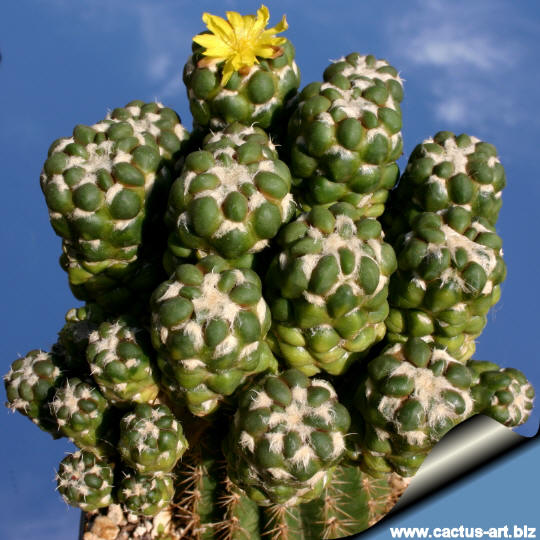
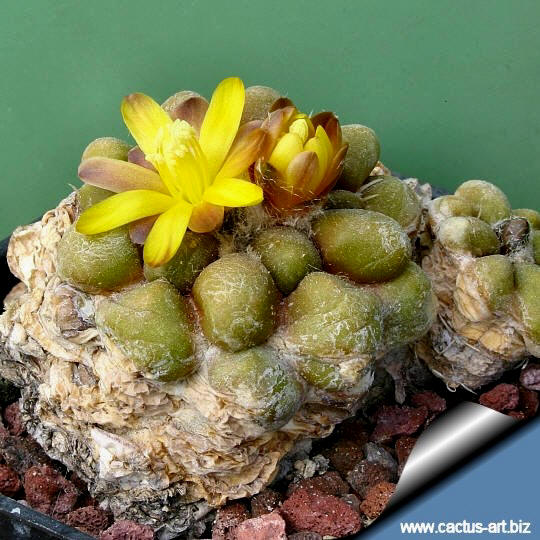
Taxonomy: This plant was discovered by the well known Czech
collector of cacti Karel Kniže in 1969, but not formally
described until 1996, by Jan Řiha.
Since the plant was different to all the known
species,
Dr. Jan Řiha and Karel Kniže established a new
genus and named it Cintia, after the province where
the plant was discovered.
The
genus Cintia comprises only one
species
validly
described (Kniže mentions three, but only one has been
described). This species was first distributed by Kniže as
Cintia napina
n.n., but when it was finally
published it was named Cintia knizei.
The other name Knize used was Cintia subterranea while a
third was refereed to as Cintia
species nova. They all look the same. They also produce the
same type of flowers and even flower at the same time.
The small yellow flowers develop extremely fast. It is close related
with Neowerdermannia.

 |
|